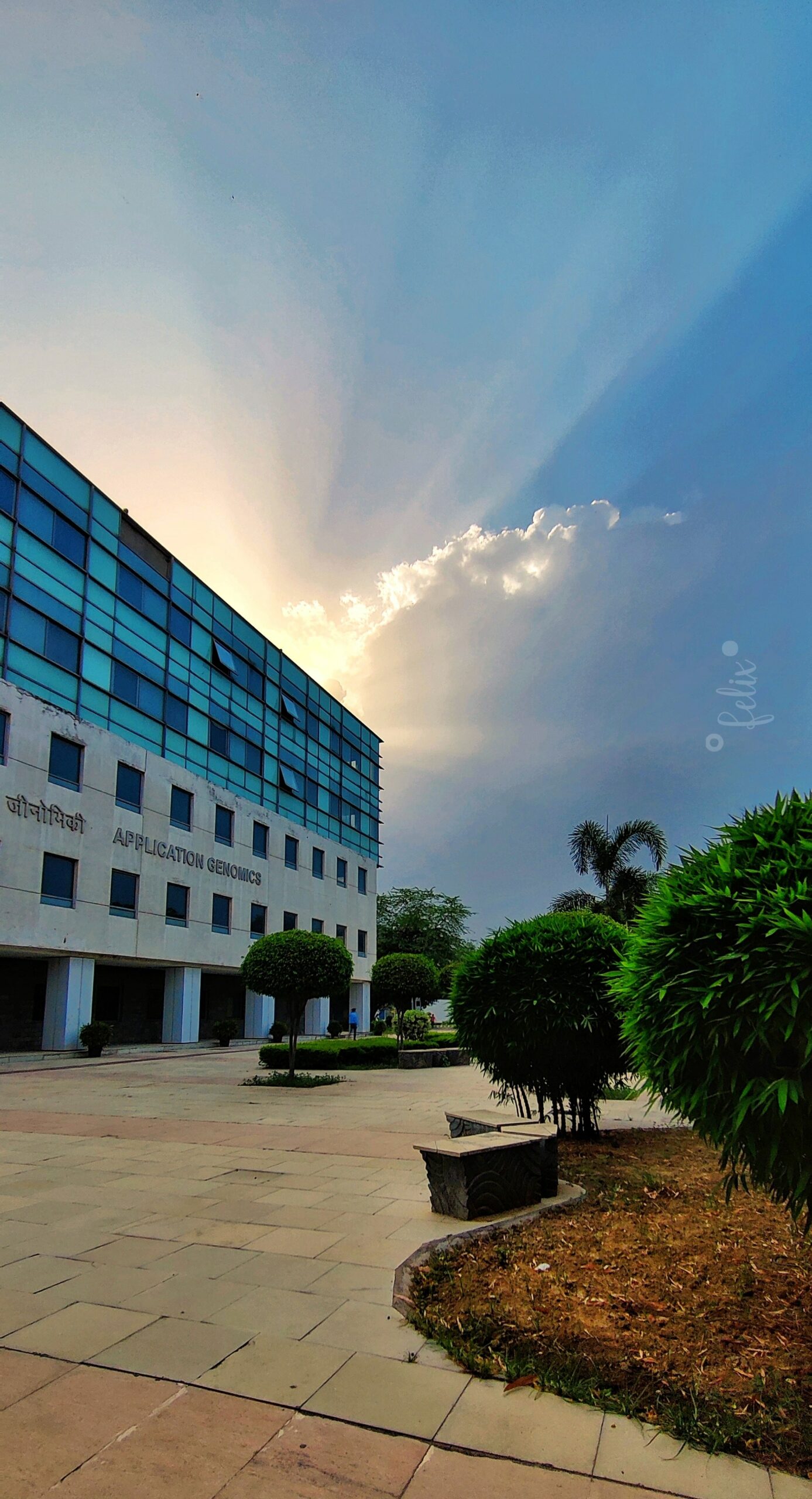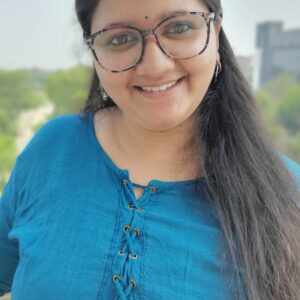Fifteenth day of the new year, 2022.
It has been very cloudy and gloomy since three days in Delhi— but it doesn’t matter— looking for silver linings among dark clouds is second nature now.
We are in the middle of the third wave of COVID-19 pandemic in India. The test positivity rate of COVID-19 in Delhi is at a whopping 30 percent. I started the day reading an online op-ed piece ‘Why Covid-19 will never become endemic’ written by Prof. Raina MacIntyre. Part of the highlighted section of the article read “There is hope for better vaccines, schedules and spacing doses, but we must be agile and pivot with the evidence and have an ambitious strategy.”
Vaccines— the ultimate silver lining of this entire ordeal.
I had taken both doses of the adenovirus vector based vaccine last year. I’m glad that my 60 plus mother who is insulin-dependent and has been a diabetic since 20 years may get her booster dose in coming days. Soon after, my father who is proud of his senior citizen status may get boosted too. Vaccines have really taken the edge off of staying away from my family members residing on the other end of the country— whom I haven’t visited in two years, two months, and counting.
Today I finally got to step outside my hostel room, having spent nearly a week in quarantine. The only friend I spend extended time with outside my ‘work bubble’ had tested positive last week. Both she and I were nearly confident that I couldn’t have possibly gotten infected— I was always wearing an N95 when we met.
Here’s another silver lining.
The science of masking, especially the effectiveness of N-95 and the likes were shown only months into the pandemic. I had refused to wear any other mask other than N-95 since then— if I were going to put up with the discomfort of a mask, I might as well be making the best effort to fulfill the actual purpose of that incredulous layer of protection. The thin layer that stands between the SARS-CoV-2 virus and a completely unpredictable trajectory of ill-health and a life beyond imagination— something I consciously evaded until now.
The most urgent thing on my agenda when outside a quarantine period is always going to the fish lab. I work with zebrafish, a tiny model organism that helps me undertake my PhD work that involves studying blood vessels. As fascinating as zebrafish are, they are living beings, and need constant monitoring. Rushed to make sure “my fishes” are doing alright, and on confirming so, I was grateful for yet another silver lining, as I have been throughout the pandemic: on-campus stay. I can cover the stretch between my hostel room and the fish facility under five minutes. Under three, when I’m in a hurry.
But that’s not all. The fish facility at CSIR-IGIB is a student run one. Which means even when I was shut away in quarantine, I had fellow students taking good care of my fishes.
It’s team work. Someone always has your back.
Year 2022.
The year I will (or rather should) finally close my PhD.
In the last week of 2021 I had given the third presentation to my Doctoral Advisory Committee (DAC), which was long overdue. I remember a former colleague saying this— “DAC-III is the beginning of the end”. The end that is the closure of the long journey of PhD.
Not that I was entirely buoyant in spite of crossing a milestone. A new variant had been cooking while some folks rejoiced over vaccine-induced immunity— because the vaccines haven’t reached as uniformly across the world as it should have.
Immediately after my DAC presentation over zoom I switched to another zoom session, along with the rest of the institute, for the year-end address by Director, CSIR-IGIB. There was only one thing to discuss, the looming incoming wave of the new SARS-Cov-2 variant, the notoriously hyper-contagious Omicron.
“All senior students will be allowed to close their work and submit their theses as soon as possible”, assured the Director. Rest of the faculty members concurred. Working in a field and at a place that had colleagues who could gauge what another wave meant, and what the ideal course of action should be is a silver lining not everyone can have.
The fact that over the entire pandemic I never had to worry about losing my job or not having a salary, cannot be reduced to being called as a silver lining— it has truly been a privilege.
Year 2021
Chaos reigned outside the campus walls.
While on campus, one could hear frequent sirens of ambulances racing across Mathura road. Delhi was in the eye of the storm that was the second wave of COVID-19— ironically we were still calling it that. A new variant of SARS-CoV-2 was detected in India around March 2021. The variant had led to a rapidly swelling second wave of COVID-19. This variant would soon be christened Delta.
Mid-April the students of IGIB were once again asked to halt their original plans of action. The fish facility duties were divided team wise to shrink ‘bubbles’ of interaction. This meant disruption of regular work. There was tension in the air. Some thought it was all unnecessary. “Ye sab afwa hai” is a line that got seared into my memory during the time.
It didn’t take long for the confusion to turn to utter panic. Come May, hospitals were full, even in the national capital. People were scavenging for oxygen cylinders left, right and center. The much-debated medications and plasma therapy were available at exorbitant costs, sometimes reaching lakhs of rupees, and yet the supply never seemed to meet the demand. The news and visuals of death were numbing, to say the least.
Unfortunately, but predictably, some IGIB students and family members were also hit by the wave. I vividly remember one of the first students to get affected was someone frantically asking for help to secure a bed for her mother in Ranchi, Jharkhand. It took nearly 24 hours filled with numerous phone calls, tweets and other social media hunts by a bunch of IGIB folks and others before a bed could be found. Reality had finally started to sink in. The student WhatsApp (WA) group was flooded with requests to find beds, oxygens and medications, and the rest would then go on a social media spree to identify relevant resources.
Naturally a new WA group for “COVID volunteers” was made. After a very brief, mostly passive participation in such volunteering, I turned to what I thought was best for me to do— sign up for COVID sample processing and science communication efforts. I put whole of my energies into both during the months of April through June. It kept me sane. It gave me the feeling that I was doing something too.
During this time one could have argued that any attempt to look for a silver lining was futile. Nevertheless, the display of communal responsibility was a wave that paralleled the Delta wave, which at least in retrospect was truly a positive force. All over the country, just like it happened at IGIB, responsible citizens had found common ground and volunteered for whatever they could and worked in tandem. For me personally, I was grateful to be part of a group which was working on directly handling COVID samples and putting out the data. There was nowhere else in the world I wanted to be at during that phase.
Not to forget, Science had already worked its charm by this time. Multiple vaccines against SARS-CoV-2 had been developed and were in clinical trials, or even approved at an unprecedented pace in the history of humankind. I stepped outside the campus for the first time in 2021 to take my first dose of vaccine in June, amidst acute shortage of vaccines in India. By the time I had the second dose in September, vaccine slots were easily available.
So as the Delta wave came down and almost everyone at IGIB had taken two doses of the vaccine, masks started to become ornamental. Parties and outings became frequent. Even I went out with friends, albeit only three times, after taking the second dose. It was like getting a glimpse of a second shot at ‘normal life’.
Even then, my N-95 mask remained constant. I was still reading enough about COVID to know that vaccines did not really mean the end of the pandemic.
Year 2020.
A month ago, the labs of Dr. Sridhar Sivasubbu and Dr. Vinod Scaria at CSIR-IGIB celebrated the tenth anniversary of the first Indian human genome release. This celebration was all the more special because only the past Diwali the same labs had released the first thousand healthy Indian genomes, sequenced indigenously in a record time of six months— a project called ‘IndiGen’. There was much to look forward to in 2020 for our groups. The anticipated outcomes of the IndiGen project were extremely exciting. For me, it was the year to start closing my PhD.
Towards the end of 2019, I had finally taken to Twitter. On January 12th 2020, Dr. Gagandeep Kang tweeted about a novel respiratory virus isolated from China, the genome sequence of which was released in a really short period since isolation. She had wondered whether any Indian lab could achieve the same feat. I started following COVID-19 news from that day onwards. I remember having discussions within the lab on this ever growing threat, which seemed alarming to me. But all discussions kept ending in “..Can COVID really survive in Indian weather?”.
The World Health Organisation declared COVID-19 as pandemic on the 11th of March 2020. On the same date I placed an order for the first set of primers targeting SARS-CoV-2 genome from the lab. On 14th the hostel students were requested to leave for home. I decided to stay behind— what about my fishes??!! The campus was almost empty within a couple of days. At our lab, except those who were explicitly requested to leave for home, almost everyone had stayed back— who took the avatars of the COVID testing team at South campus soon after, and have remained so to date.
On 23rd of March, India witnessed the first ever “Janta curfew”, followed by a nearly two and half month long nation-wide lock down which disrupted material procurement. But it didn’t matter— the SARS-CoV-2 primers were already in. All we needed now were positive samples to test the primers on.
I remember being the person who received the Engineer and co-ordinated the relocation of the laminar hood of the now very busy COVID sample preparation room. We had hoped that that hood would be enough when the samples came. We still weren’t sure how contagious the virus would be— it didn’t help that some of us specially watched the movie Contagion (2011). The concept of masks was just getting resurrected, taking lessons from the time of Spanish flu. Sanitizers were placed at major points across the campus. Everyone who stayed back on campus was expected to volunteer for COVID related activities. I doubt anyone on campus managed to get any work done that was related their own PhD projects during the lockdown.
I eventually retreated to taking full time responsibility of the fish facility, trusting the SARS-CoV-2 primers in the able hands of my colleagues. I shuttled between my hostel room and fish lab with minimal in-person contact with others— a lifestyle I have maintained until the third wave, and probably will, beyond.
By August, an attempt to restart normal operations was initiated, of course with the COVID protocols in place. I stepped down from my responsibility as a fish-lab in charge in September. Now was the time to finally ramp up my PhD work. I had made sure my fishes survived the lockdown, after all.
During this very uncertain initial phase of the pandemic, the silver lining was unquestionably being at CSIR-IGIB, at a pivotal position to contribute to fighting the pandemic. I was part of a group whose members have been ready to work day and night to keep COVID surveillance running. I could have not been more grateful that this was all happening in the internet era, where most of us remain well connected even from afar. I was literally and figuratively drowning myself in reading everything related to COVID in those days. Every waking moment in which I wasn’t doing any other tasks, which was a lot of hours during those days, I was glued to one screen or the other. I got myself lost in the Twitterverse— never could I have imagined that a social media app can be the source of so much information. The who’s whos of Science are all on this bird app, available for a conversation or a debate, just a tap of your finger tip away.
By the end of January 2020, vaccine candidates against SARS-CoV-2 were already in the pipeline. It seemed surreal then that, by the end of 2020 clinical trials would be underway. The first wave had peaked after the holiday season during the winter of 2020, but as the wave ebbed away, there was hope. Hope owing to vaccines. Hope that the infections from the first wave could offer protection against future infections. Hope that “We could learn to live with COVID”.
Cover picture Credit: Poorti Kathpalia
Samatha Mathew is a molecular biologist studying blood vessels in Zebrafish.
PhD student. •Science communicator.



I could recall all the memories of the pandemic initiation at IGIB because of your nicely, precisely painted words.! And where have we arrived.!
Thank you 🙂
Nice article. The sufferings nicely described. Nice to know that so many groups came together for fast and wide communications. Student’s energy can be very helpful.
Thank you Sir!
Nice article. The sufferings nicely described. Nice to know that so many groups came together for fast and wide communications were developed. Student’s energy can be very helpful.